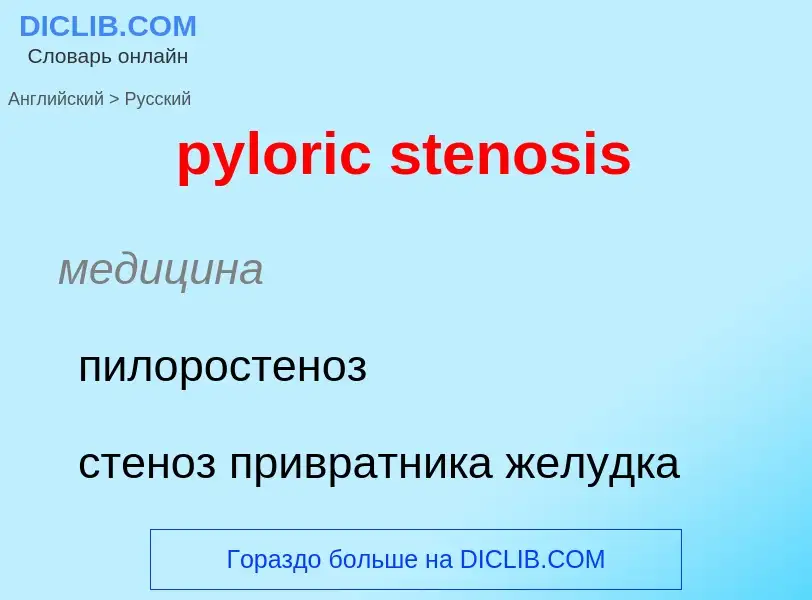Tradução e análise de palavras por inteligência artificial ChatGPT
Nesta página você pode obter uma análise detalhada de uma palavra ou frase, produzida usando a melhor tecnologia de inteligência artificial até o momento:
- como a palavra é usada
- frequência de uso
- é usado com mais frequência na fala oral ou escrita
- opções de tradução de palavras
- exemplos de uso (várias frases com tradução)
- etimologia
pyloric stenosis - tradução para russo
медицина
пилоростеноз
стеноз привратника желудка
медицина
врождённый пилоростеноз
медицина
стеноз левого атриовентрикулярного отверстия
стеноз митрального клапана
Definição
Wikipédia
Pyloric stenosis is a narrowing of the opening from the stomach to the first part of the small intestine (the pylorus). Symptoms include projectile vomiting without the presence of bile. This most often occurs after the baby is fed. The typical age that symptoms become obvious is two to twelve weeks old.
The cause of pyloric stenosis is unclear. Risk factors in babies include birth by cesarean section, preterm birth, bottle feeding, and being first born. The diagnosis may be made by feeling an olive-shaped mass in the baby's abdomen. This is often confirmed with ultrasound.
Treatment initially begins by correcting dehydration and electrolyte problems. This is then typically followed by surgery, although some treat the condition without surgery by using atropine. Results are generally good both in the short term and in the long term.
About one to two per 1,000 babies are affected, and males are affected about four times more often than females. The condition is very rare in adults. The first description of pyloric stenosis was in 1888 with surgery management first carried out in 1912 by Conrad Ramstedt. Before surgical treatment most babies died.






![[[Rheumatic heart disease]] at [[autopsy]] with characteristic findings (thickened [[mitral valve]], thickened [[chordae tendineae]], hypertrophied left ventricular [[myocardium]]). [[Rheumatic heart disease]] at [[autopsy]] with characteristic findings (thickened [[mitral valve]], thickened [[chordae tendineae]], hypertrophied left ventricular [[myocardium]]).](https://commons.wikimedia.org/wiki/Special:FilePath/Rheumatic heart disease, gross pathology 20G0013 lores.jpg?width=200)
